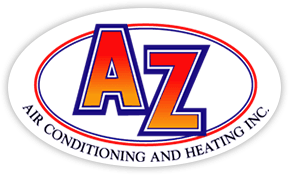
Maintaining cozy heating and cooling in Los Angeles, California, all year appears to be a great approach. But in reality, how can you maintain a comfy home while stopping energy costs from skyrocketing?
Enjoying a cozy home during the winter isn’t as complicated as you imagine. But every now and then you may require specialized assistance if you’re finding hot and cold spots. Or if your system doesn’t provide comfort like it once did.
If you’re experiencing comfort issues or seeking furnace repair, the heating and cooling pros at AZ Air Conditioning and Heating can help. Call us at (877) 559-6081 to ask for an appointment now.
For the time being, here are a few tips on how to manage your thermostat during the cooler months.
Lower Settings When You Go to Work
Decreasing the thermostat 10–15 degrees while you’re at work can save 5–15% on your utility costs, according to the Department of Energy. If your residence is empty during the day, this is a great method to reduce expenses. And when you contemplate what even 5% could do for your utility expenses, that can make a major difference!
Decrease Temperatures When You Sleep
You can also decrease the temp before you go to bed. It even benefits more than merely your heating expenses! The best temperature for going to bed is 60-67 degrees, according to the National Sleep Foundation. Your body cools off naturally to help you sleep, so keeping your room chilly could help you go to bed more quickly.
Invest in a Smart Thermostat
One point to think over if you don’t already utilize it—a smart thermostat. You won’t have to go over to the thermostat to lower it. In reality, you can change it from just about anyplace with your web-enabled device. A Wi-Fi thermostat also learns your household schedule and instinctually changes the temperature to help you save more on energy costs.
Enjoy a Comfier Residence with Assistance from the Heating and Cooling Specialists
Even if you don’t make major changes to your temp, a tiny adjustment can benefit your heating costs.
While you are managing your thermostat, there are a few other things to keep in mind during the winter.
- Set an appointment for annual furnace maintenance. Heating service ensures your system is working appropriately and could help make your furnace more efficient.
- Examine your air filter. If you don’t notice light through it, you need to get a new one.
Both of these items will help make sure your heating system is in peak form to keep your home comfortable.
If you need help using a smart thermostat or have HVAC concerns, reach the professionals at AZ Air Conditioning and Heating to gain outstanding assistance. You can reach us at (877) 559-6081 or request an appointment online.
